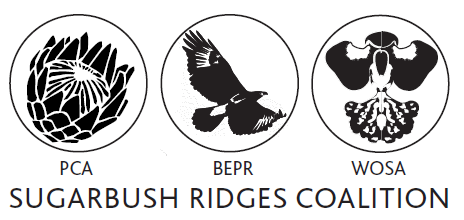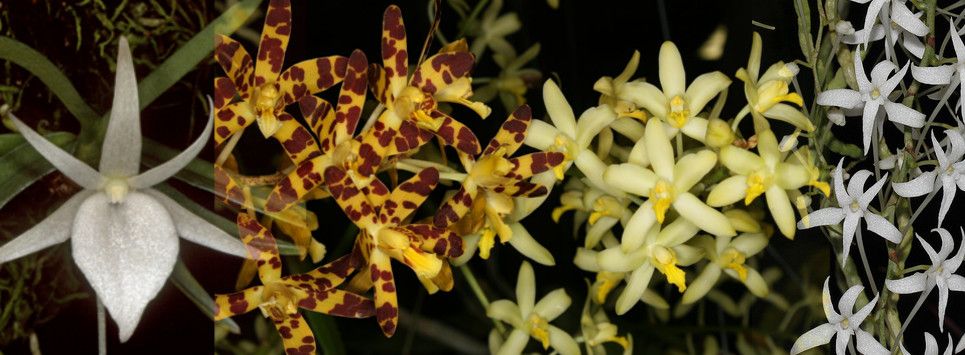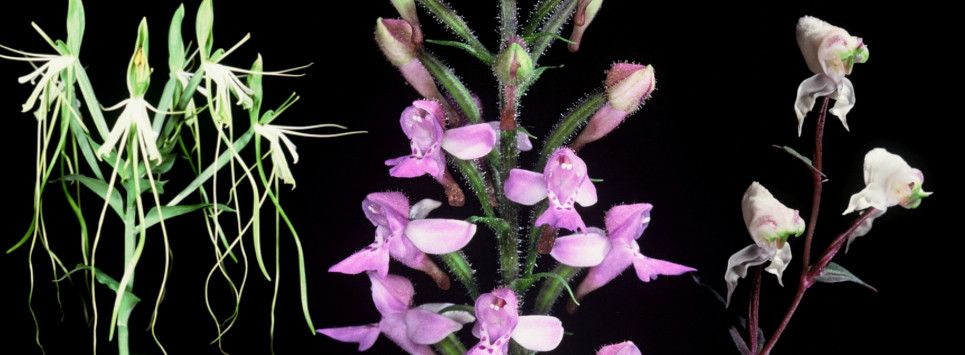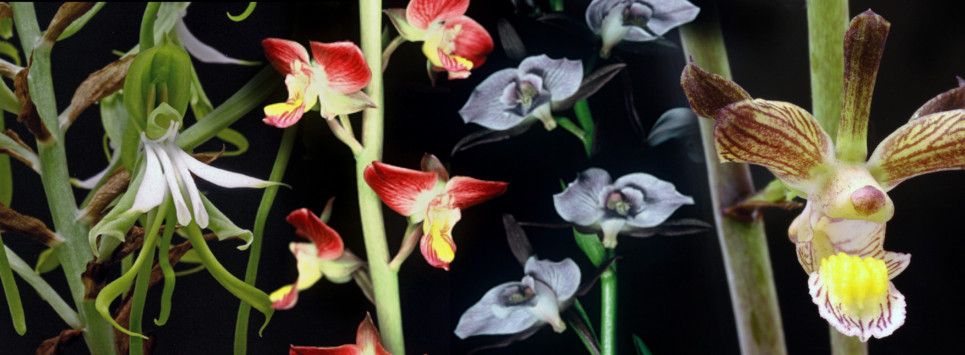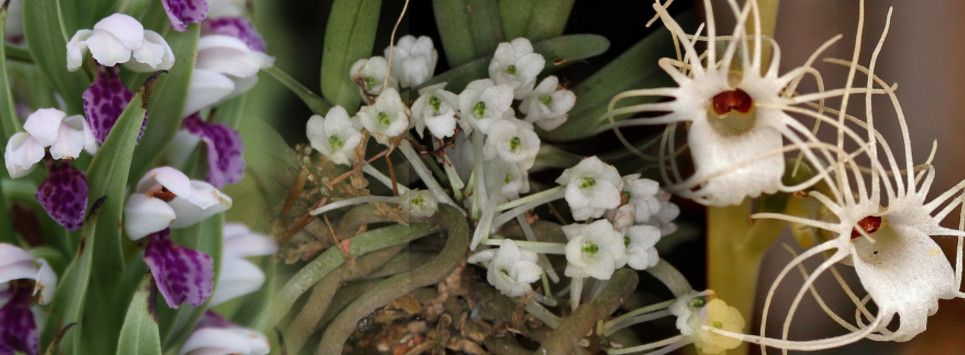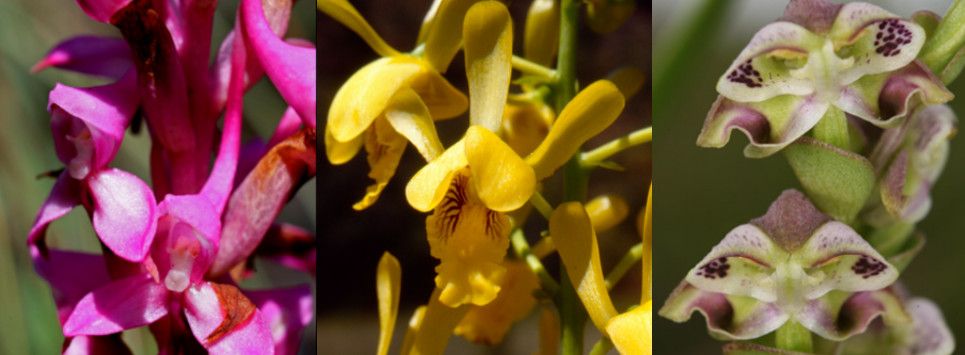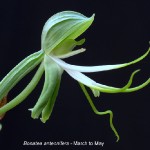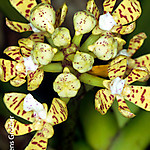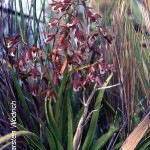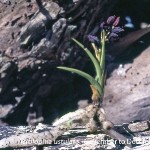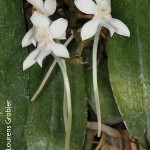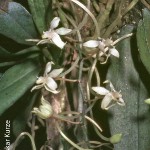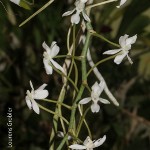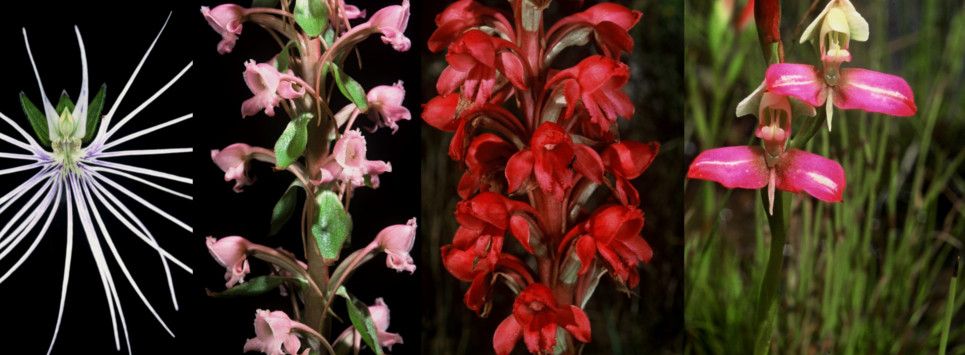
Welcome to WOSA
Very little is known about indigenous orchids by the public who are largely unaware that there are just under 500 species of which 45 are endemic (only occur in South Africa). Very little research has been carried out regarding ecology, conservation and propagation although a number of species have become extinct and habitat destruction is progressing at an alarming rate. Up until now there has been no attempt to address these issues on a National scale and Provincial legislation and cooperation is fragmented. Only through a focused National integrated effort that engages the public and all roll players will survival of orchids be assured.
Bonatea antennifera
Description
Robust terrestrial up to 1.2 m tall. Leaves 6-21, cauline, oblong to broadly spear-shaped, up to 190 mm long. Inflorescence lax to dense, 4-44 flowers, green and white, median sepal erect, up to 23 mm long, lateral sepals deflexed, up to 26 mm long, petals divided, upper lobe linear, up to 24 mm long, lower lobe narrowly linear throughout, projecting forward and ascending, up to 43 mm long, lip 3-lobed from a short and narrow base, mid-lobe narrowly linear, sharply bent near the middle, up to 34mm long, side-lobes narrowly linear with apex recurved, up to 45 mm long, spur somewhat swollen towards apex, up to 44 mm long. Similar to Bonatea boltonii, but distinguished by the forward projecting, lower petal lobes and the stigmatic arms which are club-shaped. Also similar to Bonatea speciosa, but distinguished by the shorter (less than 15 mm) club-shaped apex of the spur and lower petal lobe less than 2 mm wide.
Syn: Bonatea speciosa var. antennifera.
Acampe pachyglossa
Description
Acampe pachyglossa is a robust epiphytic plant, sometimes forming small clumps of four to five plants growing together. The stems are stiff and quite woody, while the roots are 6-8 millimetres in diameter. The succulent leaves are placed in two opposite rows along the stem and measure up to 250 millimetres long by 15-25 millimetres wide. The leaves are deeply folded and appear ‘vee-shaped’ in cross-section, with unequally bilobed tips. The flowers are fleshy, with pale yellow sepals and petals that have reddish-purple bands. The lip is white or yellow-white, with a few small purplish spots. Formerly known as Acampe praemorsa.
Acrolophia capensis
Description
Robust terrestrial up to 800 mm tall. Leaves are keeled and up to 450 mm long. Inflorescence can have up to 10 branches and carries a moderate amount to many flowers. Flower colours can be variable, with green to purplish brown petals and sepals. The lip is white with purplish callus and side lobes.
Acrolophia lunata
Description
Robust terrestrial, which grows up to 1,3m tall. Leaves are usually arranged in a basal fan and are up to 300mm long. Inflorescence carries many flowers up to 12mm long, which are white or pale pink. The lip is three lobed with 5 rows of papillae with darker reddish markings on the fringes of the papillae. Spur is club shaped. Formerly Acrolophia barbata.
Acrolophia micrantha
Description
Robust terrestrial up to 600 mm tall. Leaves overlap and are up to 300 mm long. Inflorescence has up to 5 branches and carries many flowers. Petals and sepals are purplish-green to brown, with a white lip and the lip on the side lobes purplish.
Acrolophia ustulata
Description
Slender terrestrial, up to 100mm tall. Leaves overlapping, almost folded together, linear to spear-shaped, up to 50mm long by 5mm. Inflorescence simple, 5-10 flowers, uniformly coloured, dark maroon , rarely greenish yellow, 8mm long, petals and sepals similar, lip 3-lobed.
Aerangis kirkii
Description
Slender epiphyte with wooden stem 10-50 mm long and roots 1-2 mm in diameter. Leaves 2-7, dark to greyish green, spear shaped with the apex being the widest. They are unequally bilobed and up to 150 mm long. Inflorescence one or more lateral, up to 170 mm long and carrying 2-6 flowers. Flowers are white with a pink tinged spur.
Aerangis mystacidii
Description
Fairly robust epiphyte, with woody stems up to 30 mm long. Leaves spear-shaped, unequally bilobed and up to 150 mm long. One to several lateral inflorescences, horizontal or hanging, up to 200 mm long. Flowers white. Spur slender, up to 80mm long. Similar to A. somalensis, but has a shorter spur.
Aerangis somalensis
Description
Fairly robust epiphyte with woody stem up to 15 mm long. Two to six leaves, spear-shaped, often with wavy edges, deeply and almost equally bilobed and grey-green in colour. One to several lateral inflorescences, up to 200mm long and carrying 4-17 flowers which are white. Spur slender, up to 120mm long. Similar to A. mystacidii but has a longer spur.
Aerangis verdickii
Description
Robust epiphyte, with a woody stem up to 40 mm long. Leaves strap-shaped and often fleshy, widest at their ends and narrowing towards their base and unequally bilobed. One or more lateral inflorescences of up to 200 mm length, carrying 4-12 flowers. Flowers are white with a cream to ivory spur. Plants in Zimbabwe have been observed to shed their leaves in winter during the dry season.
Angraecum chamaeanthus
Description
Miniature twig epiphyte, with stems less than 10 mm long. Leaves 3-6, strap shaped and somewhat fleshy. Inflorescences lateral, one to several, up to 20 mm long. 5-12 flowers white in colour and 1-2 mm across.
For more information regarding the preservation of South Africa's wild Orchids or if you would like to get involved please email This email address is being protected from spambots. You need JavaScript enabled to view it. or complete this short form Contact Us and we will contact you.
